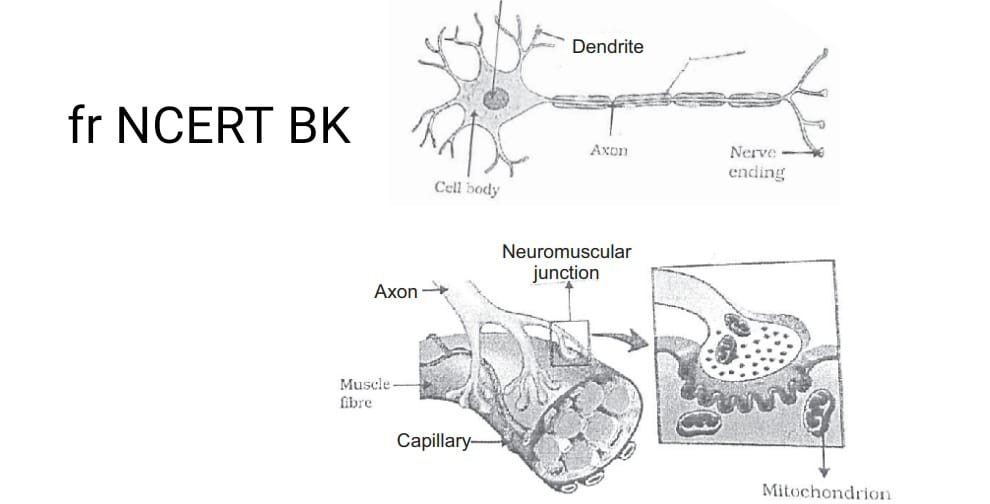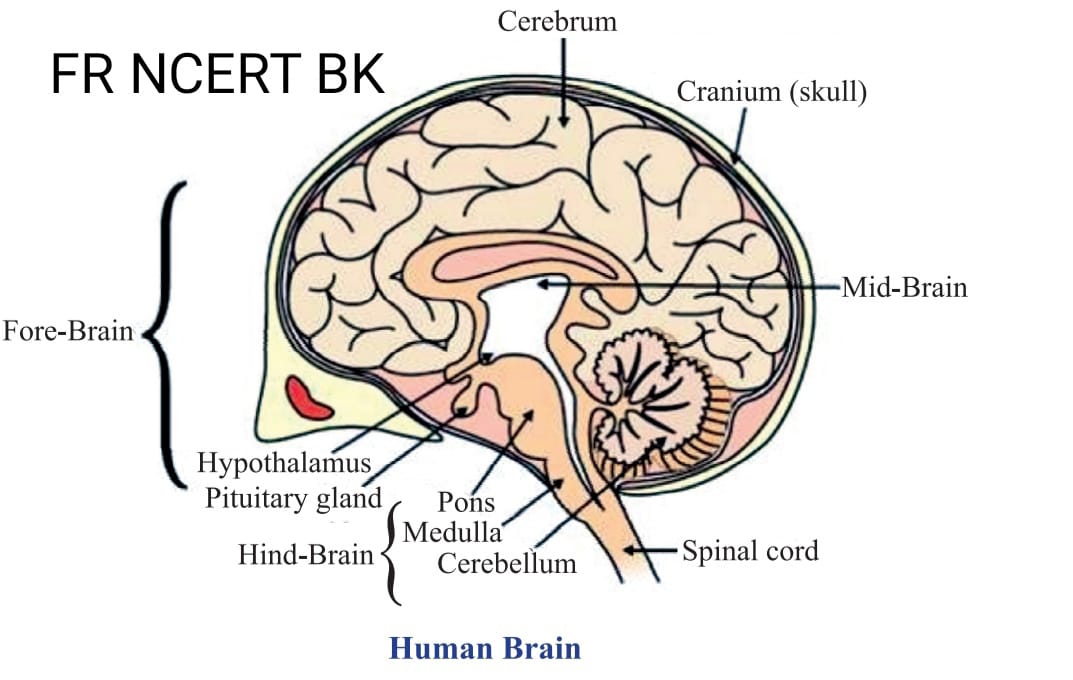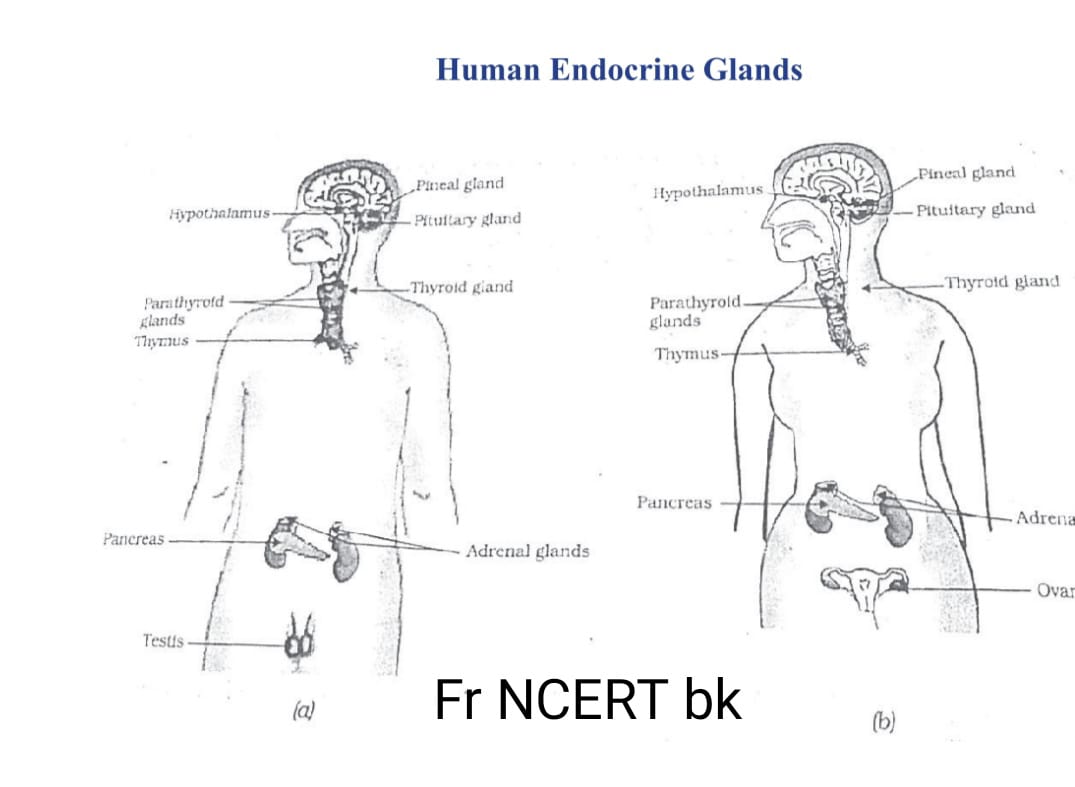CONTROL AND CO ORDINATIN
All the living being respond and react due to change in environment around them. The change in the environment to which the organism respond is called STIMULI such as sun light heat cold sound smell or touch.
CONTROL AND CO ORDINATION in animals
It is possible in all animals with the help of a) Nervous System b) Endocrine System
NERVOUS SYSTEM: Nervous and Muscular tissue provide the control and co – ordination in the body. Organized network of nerve cells makes the complete nervous system. All information from our environment is detected by nerve cells the special kind. These receptors are located our sense organs such as inner ear, nose, tongue,
Gustatory receptors detect taste, Olfactory receptor detect smell Photoreceptors for hearing, Thermoreceptors for heat/cold while touch, Photoreceptors for sight.
There is unique way in which the impulse travel first of all the information is acquired at the end of dendritic tip of nerve cell the chemical reaction starts which create electrical impulse that travel from dendritic to cell body at the end of axon the electrical impulse releases some chemical, cross the gap/synapse and similar function continue this is how the nervous impulse travel in our body. Dendritic is the point where information is acquired, neuromuscular junction by which electrical impulse travel, mitochondrion where impulse is converted into chemical signal for transmission. 
REFLEX ACTION: It is the process of detecting the signal, responding to the output action quickly is called reflex arc, it is formed in spinal cord and information goes into brain. The pathway through which nerve impulses pass during reflex arc. a) Stimulus as heat reaches to receptors organ skin reaches to spinal cord b) Respond to effective organ muscles final response of withdrawing of hands.
We have seen that response of three type a) VOLUNTARY which controlled by fore brain such as talking writing etc. b) INVOLUNTRY It is controlled by mid brain and hind brain such as beat, vomiting respiration etc. c)REFLEX ACTION It is completely controlled by spinal cord withdrawal of hand if touches hot objects. In some situation it is important for having quick action otherwise our would be harmed.
HUMAN NERVOUS SYSTEM
The human nervous system is divided into two main system a) Central Nervous System consist of Brain and spinal cord b) Peripheral Nervous System is consist of Cranial Nerves and spinal Nerve which is further divided into Somatic Nervous System that control all Voluntary functions, Autonomous Nervous control all involuntary function.
THE NEURON Itis the longest cell of body is of three types a) Sensory Neuron it is responsible of all the senses in the body such as gustatory receptors and others as mention above b)Relay Neuron these neuron are responsible for transmitting the signal from sensory neuron to the CNS these are of two type Afferent Neuron takes the signal from the organ to CNS b) Efferent Neuron that takes the signal from CNS to the Organ. Motor Neuron are connected with the muscles which are responsible for the muscle contraction.
HUMAN BRAIN
The Brain is the main coordinating Centre of the body it has three major parts a) Fore Brain It is the most complex/specialized part of brain it is consist of Cerebrum and Hypothalamus the main function are it is thinking part of brain, control of voluntary actions, store information or memory, it receives the sensory impulses from various parts of the body and integrate it, it is also associated with hunger. b) Mid Brain control the involuntary action that change in pupil size, Reflex movement of head, neck, trunk. c) Hind Brain has three parts i)Cerebellum it controls posture and balance, Precision of Voluntary action such as picking of pen. ii)Medulla Oblogata control involuntary actions such as blood pressure, salivation vomiting. iii) Pons it controls involuntary action such as regulation of respiration.
PROTECTION OF BRAIN AND SPINAL CORD
BRAIN is protected by the fluid filled ballon which acts as shock absorb and enclosed in cranium /skull or brain box. whereas SPINAL CORD is enclosed in Vertebral column.
Coordination between Nervous and Muscular Tissue in this STIMLUS comes in contact with sense organ which create sensory nerve to CNS receive the information processed which make the decision made response is generated through motor nerve rearrangement of muscles proteins response can be noticed.
LIMITATIONS OF NERVOUS SYSTEM
Electric impulse will reach only to those cells that are connected by nervous tissue ..After generation and transmission of the electrical impulse, the cell takes some time to reset its mechanism before transmitting another impulse so cells cannot continually create and transmit impulse, but plants don’t have any nervous system.
COORDINATION IN PLANTS
MOVEMENT IN PLANTS are of two kind independent of growth and dependent on growth.
INDEPENDENT OF GROWTH: It is the immediate response to stimulus it is nastic movement; plants use chemicals or electrical means to convey the information from cell to cell in this cell changes its shape by changing the amount of water in them, that is the result of swelling or shrinking of cells drooping of leaves of touch me not plant.
DEPENDENT ON GROWTH: These movement are tropic movement. It represents the directional movement in response to stimulus. a) Phototropism: It is the movement of plants towards light eg growth of shoots towards light. b) Geotropism: It is the movement towards/away the gravity or away from the light growth of roots in soil. c) Chemotropism: It is the movement to or away of chemicals in plants growth of pollen tube towards the ovule d) Hydrotropism: It is the movement of plants towards water growth of roots towards water.
TENDEILS: The part of the tendrils away from the object grows more rapidly than the near parts of the plant which causes the circulating of tendrils.
PLANT HARMONES: They are those chemicals which help in the coordination, growth, development and response to environment the most important are a) AUXIN which synthesizes at shoot tips so that plant may grow longer also involved in phototropism. b) GIBBERELLIN: That helps the growth of stem c) CYTOLININS that promotes the cell division which is present amount in fruits and seeds. d)ASCISIC ACID It also help in growth, wilting of leaves and stress hormones. \
ANIMAL HARMONES: they are the chemical substances which coordinate the activities of living organisms and help them to grow. ENDOCRINE GLANDS secrete the hormones into the blood provide different functions. a) THYROXINE is secreted by THYROD gland which is located at neck/throat it helps in metabolism of carbohydrates’, fats, proteins b) GROWTH HARMONE is secrete by PITUITARY gland /master gland present in the mid brain that helps in growth and development of the body. c)ADERNALINE which is secrete by ADERNAL present just above both kidney that increase the blood pressure, heartbeat, metabolism of carbohydrate in emergency. d)PANCREAS secrete INSULIN which below stomach that reduce blood sugar. e) TESTIS secrete TESTOSTERON the male sex hormones at lower genital abdominal aera causes the change in the puberty giving sex maturity, ESTROGEN is the sex hormone of female gives sex maturity secretes at OVARY. f) HYPOTHALMUS secrete at MID BRAIN which stimulate the pituitary glands to secrete the hormones.
IODISED SALT is necessary because iodine is important part of thyroxine hormone which regulate the metabolism of fats, proteins and carbohydrates so we must consume it for proper working of thyroid gland its deficiency causes Goiter disease /swollen neck.
DIABETES ; It is the disease in which blood sugar level increases. when insulin hormone is deficient in blood secreted by pancreas that are responsible to control the blood sugar so injection of insulin hormone is used .